When you tell people you are a scientist, they often say “Oh, that’s nice” and then don’t really know what else to ask (unless they are a scientist too). In my case, that is fair enough. Usually I sit in an office, do some number crunching and write stuff. It’s not that exciting to talk about, even though the topic I work with is really interesting. But every now and then I get to do really cool stuff too. Recently I’ve got to do really cool stuff – twice!
My job at the moment involves the aforementioned number crunching/writing to do with environmental pollutants in seabird eggs. These eggs have been collected for a number of years (depending on the species), and someone has to go and collect them. So in May I got to be one of the people collected eggs from rhinoceros auklets. Rhino auklets get their name from the little horn that grows on the top of their beak, in close to their face (look closely at the photo below), reminding whoever named them of rhinos. They are a little puffin-looking seabird, and the sampling site (or colony) we were going to in this case just happened to be off the west coast of Vancouver Island, from Tofino. They are a burrow nesting bird – meaning that rather than have a nest on the surface or in a tree, they dig burrows into the ground, much like a rabbit would. That also means that to fetch their eggs we have to put our arms into holes in the ground.
Our day started about 7am – we were on the water at 7am – and then had about a 30 min boat ride out to the island. What a commute to work! We had perfect weather, calm seas, bright sunshine and saw sea otters on the way out, and one end of the island was a sea lion colony. The end where we landed had a seal colony. The seals largely slithered off the rocks when we turned up and into the water, where they popped their heads out to watch us. So funny to see, and so obvious they were checking out what we were doing – animals are so intelligent!
Cleland Island is an ecological reserve, meaning that the general public is not allowed to land there. There were 4 of us on the island, initially in bright orange mustang suits, and whale watching boats and fishermen who saw us started radioing in that there were 4 people crawling all over the island. But I think that’s a good thing, as who else will police such rules if not the locals who know the island? Anyway, we clearly were allowed to be there crawling all over the place.
We got kitted up for the days work ahead – gumboots (rubber boots or rain boots for those of you who don’t hear gumboots often), waterproof pants, a grubbing shirt (just a long sleeve button up shirt) and dishwash gloves with the fingers cut off and another dish glove with the whole hand cut off so you can pull it right up your arm. Yes, really. High tech scientific equipment. But when you are sticking your hand and arm down a hole in the ground, and getting scratched as you do it, a bit of protection on your hand doesn’t go astray. But why fingerless? We still needed to be able to feel what we were touching – had we just touched a bird, or was it a rock/lump of soil? Waterproof pants because the ground isn’t always dry. Oh, and don’t forget the trowel.
There is something quite foreign to sticking your hand into an animal’s burrow in the ground. Somehow I could just picture my mum telling me not to stick my hand down the hole (why was I thinking that – mum, did you ever tell me that as a kid?? Did I have a habit of sticking my hands down animal burrows?). How did I know it would contain a bird, and not a rat, or worse yet, a snake? Well, I didn’t know that. Turns out there are no snakes on Cleland (or at least, no rattle snakes) and as to rats, I would also assume there are none otherwise the burrow nesting birds would be quickly wiped out (as has happened in many places in NZ).
The burrows auklets dig are quite long, so you usually have to “grub” in to the nesting chamber. That means that once your arm is in full length, you take a trowel in the other hand, guesstimate where your hidden hand is, and dig down to it. Sometimes this is only 10 centimetres into the ground before you break through into the burrow, and other times the whole trowel disappears into the ground before you can feel the tip of it poking through into the burrow. Then you pull your arm out, block the entrance to the tunnel (can’t have the birds escaping half way through) and stick your arm down again where you had just dug down. Auklets don’t always dig tunnels in straight lines either, and occasionally they branch off, so you have to guess which way to go – left or right. Some auklets also don’t take kindly to a human hand entering their burrow and will give you a good nip (and sometimes won’t let go – a few swear words were bandied around over the 2 days we spent doing this). We then had to feel around to see if there was an egg in there, and if so, remove it (we did this only for 15 eggs; eggs are only collected once every 4 years). We also had to remove the birds in some cases, as we had to take measurements from them (wing length, weight, beak length and width etc) and attach geolocators to some (little radio tracking things that allow their movements to be tracked), so you are also trying to extract a wriggling bird who is usually pretty annoyed, maybe biting you, without breaking their burrow and snapping off bird legs as you go. Surprisingly quite tricky to extract sometimes, especially when you are at the very extent of your arms length. Then into a bird bag (they are calmer if they can’t see) and off to our tent we had set up to have all these measurements done.
Once the measurements were taken, the geolocators attached and the birds banded (so if they are are ever caught again in the future we can identify the bird and see how much it has grown), we returned them to their burrows.
These were 2 quite long and tiring days, especially for someone who spends most of her days sitting on her behind at a computer – we were getting up around 6am, out at the island by 730am, crawling around on our bellies and grubbing for birds all day, returning about 7pm, and then showering and getting dinner and it was 930pm already.
Being good environmentalists, we also collected trash off the end of the island where we were one day. Quite a bit of it was Japanese – drink bottles, buoys etc., things still washing in after the 2011 Japanese tsunami. Hard to think that a small island on the eastern side of the Pacific is still collecting debri from a large natural event that occurred a few years ago on the other side of the Pacific. And sad to believe what other trash was there (non-Japanese) when people are not even allowed on the island.
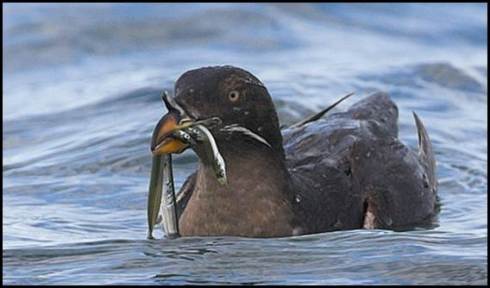
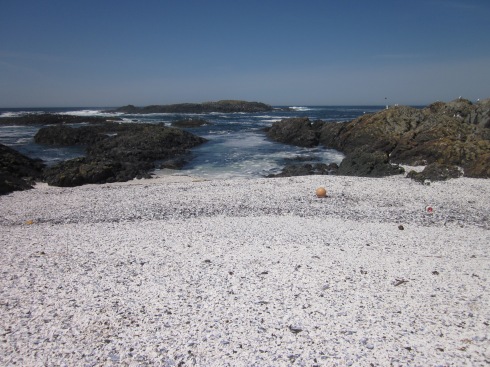
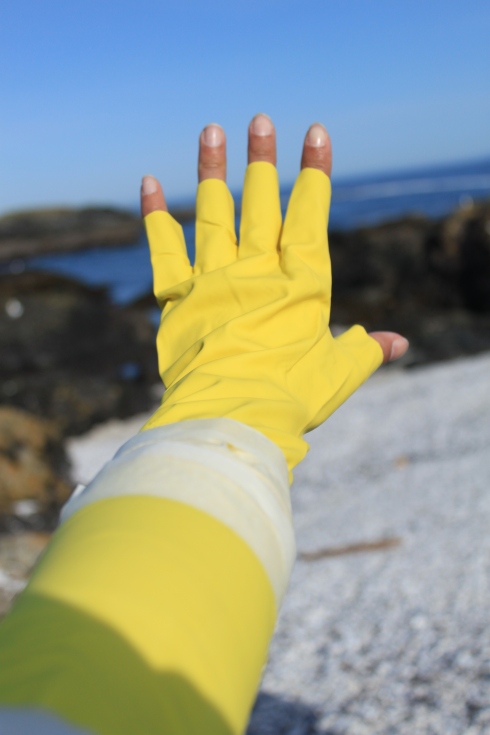
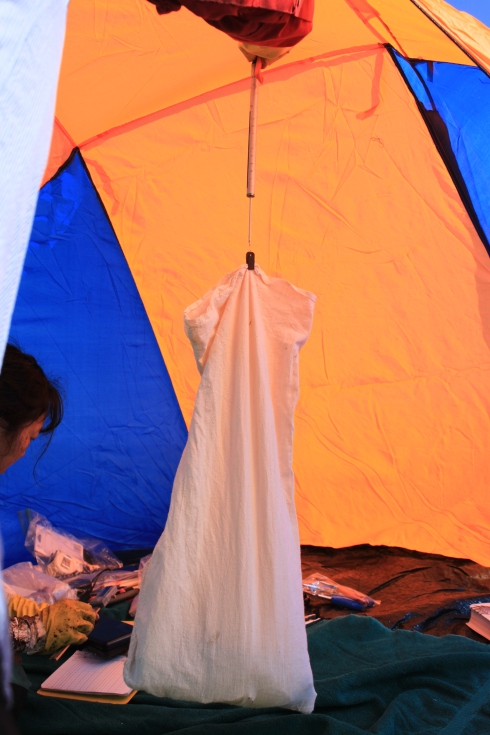
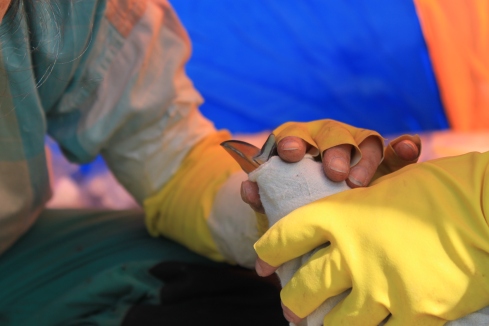
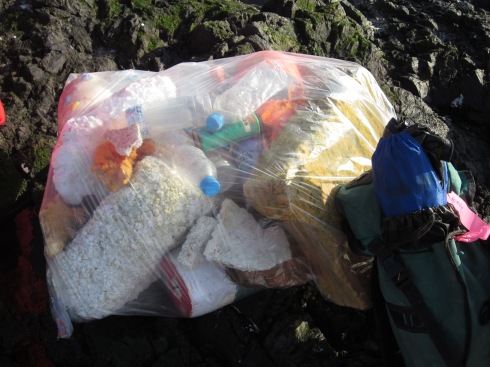
April 18th, 2015 at 6:13 pm
[…] fact they have no clue I am writing this!). First up, you may remember I wrote a post about “A day (or two) in my life“, where I was out off the coast from Tofino sampling seabirds – well we chartered the […]